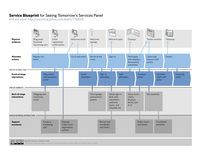
Photo from wikipedia
Automated decision-making (ADM) technologies, like artificial intelligence and machine learning, are increasingly being used by governments. Researchers have attempted to map the deployment of these technologies. However, mapping is an… Click to show full abstract
Automated decision-making (ADM) technologies, like artificial intelligence and machine learning, are increasingly being used by governments. Researchers have attempted to map the deployment of these technologies. However, mapping is an inherently political act, reinforcing dominant discourses and imaginings of technological futures. In this article, I engage with critical cartography to outline the potential of counter-mapping for researching automation in decision making, with the purpose of mapping, to quote from Hodgson and Schroeder in 2002, “against dominant power structures, to further seemingly progressive goals.” Drawing on the case of ADM in Australian social services, I reflexively account for how counter-mapping can provide a method for moving beyond dominant discourses of efficiency, cost cutting, and industriousness, to allow the alternative voices of service users’ experiences of ADM to be heard. I argue that future ADM mapping needs to focus on making visible those who are subject to the decisions of automated systems, but are usually made unknowable by the over-confident calculability of dominant ADM discourses.
Journal Title: Qualitative Inquiry
Year Published: 2022
Link to full text (if available)
Share on Social Media: Sign Up to like & get
recommendations!